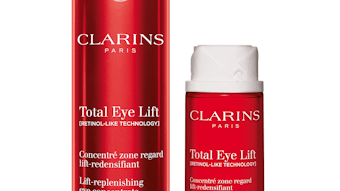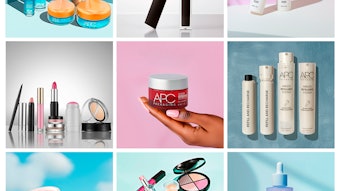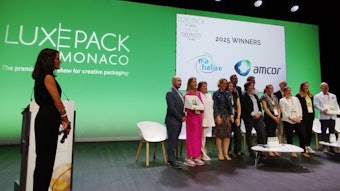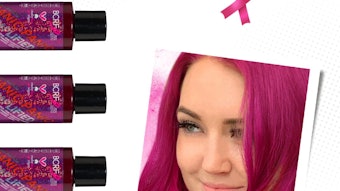Recently, L’Oréal Paris launched the first-ever “intelligent” beauty vending machine experience in the New York subway system. The beauty vending machine, which is located at Bryant Park’s Fifth Avenue and 42nd Street station, has the consumer stand in front of its full-length mirror while the color of her outfit is analyzed. The machine then selects the most prominent color palettes and makes product recommendations based on them—including eye, lip and nail shade recommendations. The consumer can then purchase the selected products right at the machine, on the subway platform, in just minutes. This sleek new structure, with three large digital screens at the seven- by 14-foot kiosk, is the first of its kind anywhere.
Marc Speichert, chief marketing officer with L’Oréal USA, was quoted as saying about the machine, “We are proud to continue L’Oréal Paris’ digital leadership by being the first brand to bring women a highly customized and convenient way to shop beauty in a place they would least expect it.”
At about the same time, trendy Japanese retailer Uniqlo opened a 174-square-foot pop-up shop in New York’s downtown Union Square station, and the Metropolitan Transit Authority’s director of real estate was quoted in news reports as saying, “These shops are not geared so much toward people who think they’re in a shopping mode but toward people who are in a hurry…” And reportedly, marketing experts at firms such as Apple and Microsoft are investigating similar on-the-go outlets and opportunities.
What does this tell the global beauty industry about the future of this business? About the nature of today’s consumer? About product development? And how does packaging connect the dots in this new sales paradigm? Likely, that beauty brand owners, marketers and suppliers need to be thinking of the lives consumers are realistically living—and figure not only how beauty products fit into those lives but how they can enhance those lives as well.
Mega Trends and Today’s Color Cosmetics Consumer
At Albéa, we recognize and devise packaging solutions that reflect the existence of several interrelated consumer mega trends. These factors—such as nomadism, concerns over sustainability, the desire to remain young-looking, convenience and the need to differentiate—reinforce how the beauty industry stands at the crossroads of cultural anthropology, chemistry, engineering and commerce.
In the December 2013 issue of GCI, The Whole Package column “Building Bulletproof Relationships” noted the interrelationship between brand strength and package design. The package is the critical touch point and should be the distilled expression of the brand. I would go a step further and state that another key factor is where and how the package is presented or made available to the end user.
Nomadism, in particular, is a mega trend to watch. This refers to the on-the-go nature of the prototypical consumer of color cosmetics. She is pressed for time and has a full schedule of activities throughout the day. Therefore, her lipsticks and gloss, eye makeup and powder can be found, and are used, at home, at work, at the gym, in the car, and at restaurants, clubs and other nighttime spots.
The pursuit of ageless beauty intertwines with nomadism. The result is the push for product convergence. Hybrid products in color cosmetics and skin care save consumers time as they blur the boundaries between product categories. And these multi-purpose, sophisticated, delicate formulas require next-generation packaging—with the trend to softer textures, higher concentrations of active ingredients, volatile chemical bases and beyond in beauty formulations, especially when compared to traditional wax-and-pigment products.
These more sophisticated products have less structural rigidity, and while consumers love the combination of long-lasting shine and moisturizing properties, packaging suppliers, designers and developers must recognize the movement toward more neutral, airtight and airless packs that preserve the formula. At Albéa, we envision this as integrated packaging solutions; for example, a compact that dispenses both loose powder and a liquid formulation—multifunctional with purpose, portability and ease of use.
In the Fashion Business
In the beauty business—and in color cosmetics, in particular—let’s face it, we are also in the fashion business. Novelty, fresh new features and new decoration motifs excite the consumer and create retail excitement. In practical terms, this drives beauty packaging suppliers to constantly enhance the ability to mix plastics with metal or develop new decoration techniques and new features.
Focusing on lipstick applications, an example is a lipstick designed with a hidden mirror for precise application on-the-go. Another example is a lipstick product that allows the consumer to see the shade without opening the package. It is important for today’s consumers to see the hue of the product at the point of sale. Frankly, such packaging is a plus for the retailer as well as for the consumer. In one case, Albéa’s high-speed laser technology allowed the company to design a specially made lipstick cap with a large, crisply defined transparent window that allowed immediate visualization of the lipstick bullet.
We spend time and effort talking to consumers and actually watching them conduct their beauty regimens. From this hands-on research, we understand the impact of the luxe factor. Even in the most uncertain economic times, the daily indulgence of the beauty ritual is a vital component of many consumers’ overall self-esteem.
In terms of color cosmetic packaging, this move to premiumization is represented by the popularity of metal. All-metal engraved lipsticks, for example, communicate spectacularly with upscale and upwardly mobile consumers. For example, many major high-end brand owners are undertaking dynamic reinterpretations of all-time classic packaging with metal components.
For the masstige and mass end of the spectrum, premiumization is also a factor—as is cost reduction. Leading suppliers offer a full range of decoration options, such as metallization, to deliver a premium look without the cost of all-metal packaging. Holographic film on all sides and sputtering, a metallization process that first came on the scene in the electronics industry, are other choices that appeal to mass and masstige brands.
Changing the lipstick bullet shape is another solution that addresses the need for something new. Ideas such as airtight elliptical- and teardrop-shaped bullet lipsticks, with guided mechanisms, which work well for softer formulas and precise application, have been developed. One model even combines the lip liner and lipstick in the same bullet.
Lip gloss applicators and mascara brushes also can be contemporized. Research shows consumers continually seek fresh new applicator and mascara application experiences via new shapes, textures and tactile sensations. In one case, a series of applicators, each with a novel tip that looks and feels different, have been developed. (For more on color cosmetic packaging innovation, including applications for mascara, lips, foundations and more, read "Without Compromise: The Intricacies and Innovations of Color Cosmetic Packaging".)
Into the Hands of the Consumer
The reality is that many consumers buy a color cosmetic product because they fall in love with the packaging. The savvy brand owner will explore all possible technologies, shapes, features and designs—as well as decoration and surface treatment techniques—and weigh the technical and cost considerations.
However, they also need to investigate new ways of getting their products and brand identities into the hands and hearts of target consumers. Today’s sampler is no longer a freebie or a giveaway. Rather, sampler programs are now cleverly and effectively integrated into the overall launch program. The idea, of course, is to induce trial.
Thus, we see the increasing importance of the beauty box. Consumers subscribe and receive monthly boxes packed with luxury brand, trial-sized beauty products. This trend is becoming geographically diverse, with offerings being sold from France to South Africa. More and more brands now invest in this new communications tool. (Learn more about beauty box sampling in the article "Getting the Most from Your Sampling Subscription Partnership” in the November 2013 issue of GCI magazine.)
In addition, leading beauty brands are using the power of social media to promote new products and get ever closer to their consumers. As I write this, L’Oréal Paris USA has more than two million Facebook “likes.” Maybelline has twice that number. Burberry has nearly 17 million. That is quite a nice online constituency.
Beauty Across Platforms
The package is the brand in its most tangible form, and the type of differentiation achieved by the pairing of savvy brand owners and world-class suppliers makes an impact that builds brands in the beauty industry. But differentiation takes many forms: the architecture of the package, the formulation, the application gesture, the pack’s aesthetics and on and on.
Differentiation in today’s color cosmetics market also refers to the means of distribution and consumer contact. Is the product found in a brick-and-mortar store? Online? Via social media platforms? In a monthly beauty box? Or can it be purchased on a subway platform? Seemingly, it is only a matter of time before “non-traditional” becomes the new normal. (To read more about the new “norms” in color cosmetics, read “Color Cosmetics in the Midst of a Makeover.”)
Nathalie Nowak, who has held senior management positions at both consumer and B2B product makers, is executive vice president of marketing, innovation and development for Albéa Group. Albéa is a leading company in the packaging sector, offering a wide range of solutions for the cosmetic, perfume, skin care and oral care markets. With its headquarters in France, Albéa employs 16,700 people and operates 46 industrial sites throughout Europe, the Americas and Asia.









